Truly honored to share the pre-print of my latest publication. This piece was produced in conversation with this ambitious special issue on the ‘littoral zone’ and the expansive ways in which we think/create/imagine Southeast Asian studies. Yet this piece also had several before lives, workshopped in literary arts communities and women’s writing groups that emboldened me to bring together my commitments to academia and arts in a singular embodied piece of writing. This piece marks my own transitional littoral moment, a turning of the chapter towards a different type of scholarly identity and community artist, a feminist troubling of knowledge and narrative.
For published essay, see
Cindy Anh Nguyen (2023) “Collecting Through Absence: Fragmenting Vietnamese Refugee Archives”, Wasafiri, 38:4, 22-30, DOI: 10.1080/02690055.2023.2237770
For other pieces in this special issue: https://www.tandfonline.com/toc/rwas20/38/4?nav=tocList

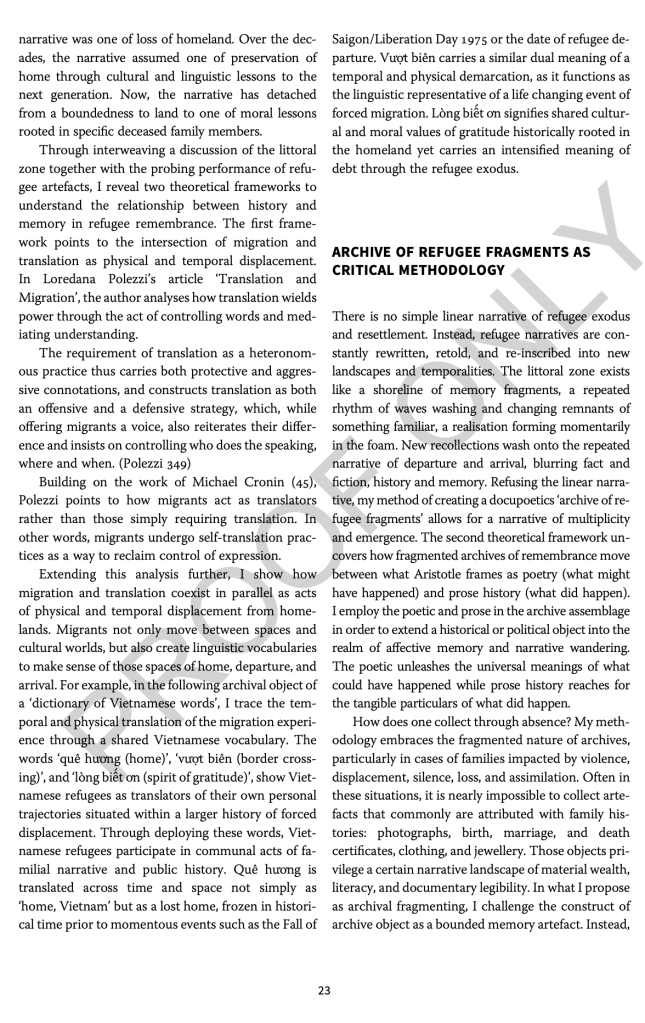
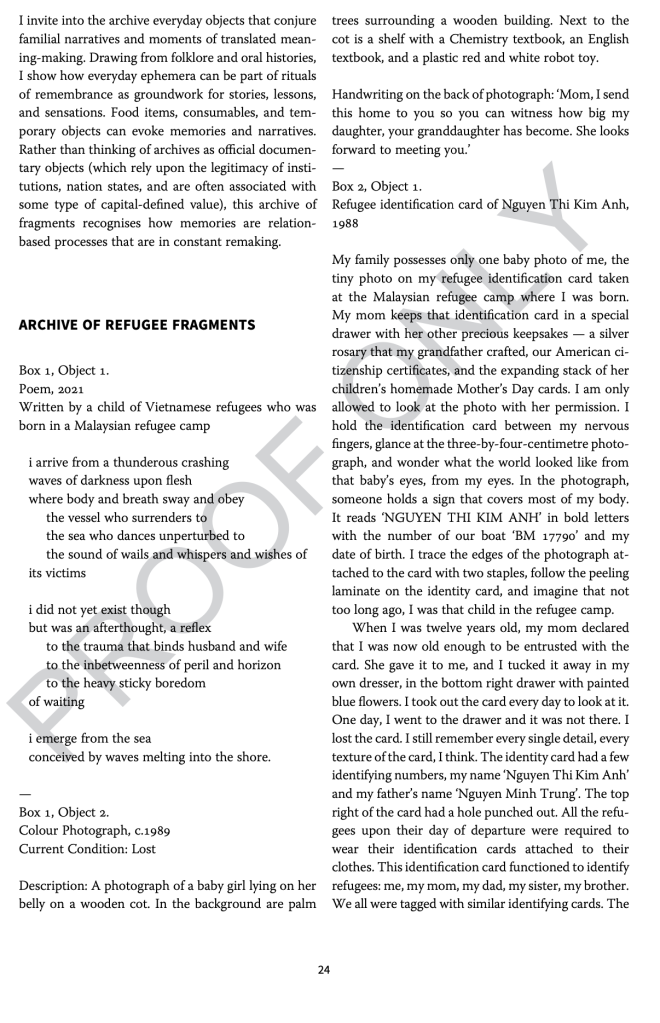
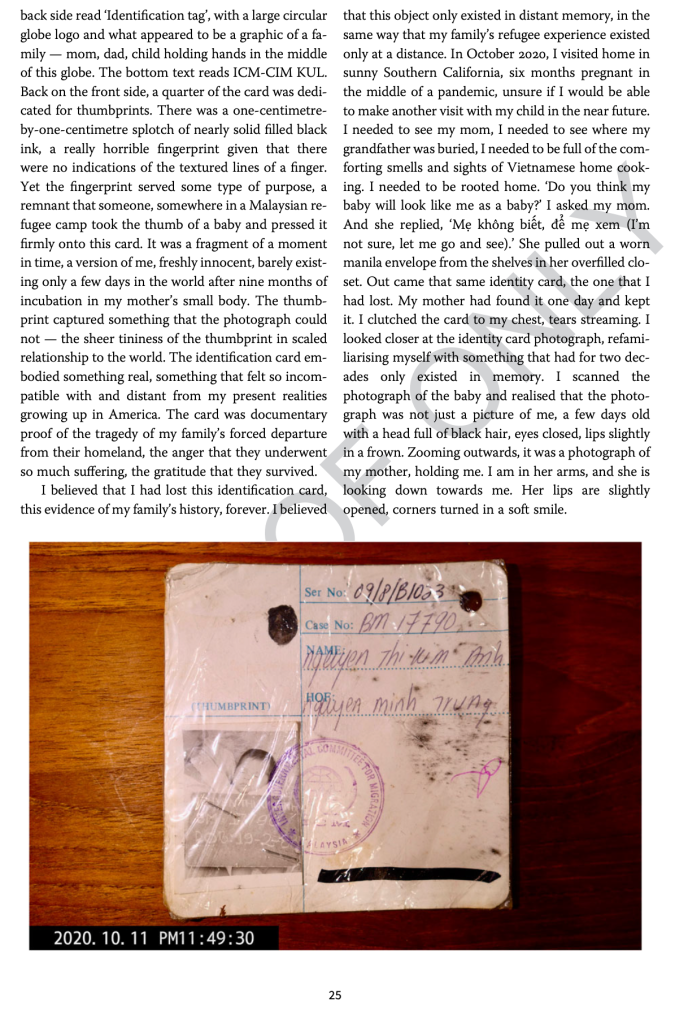

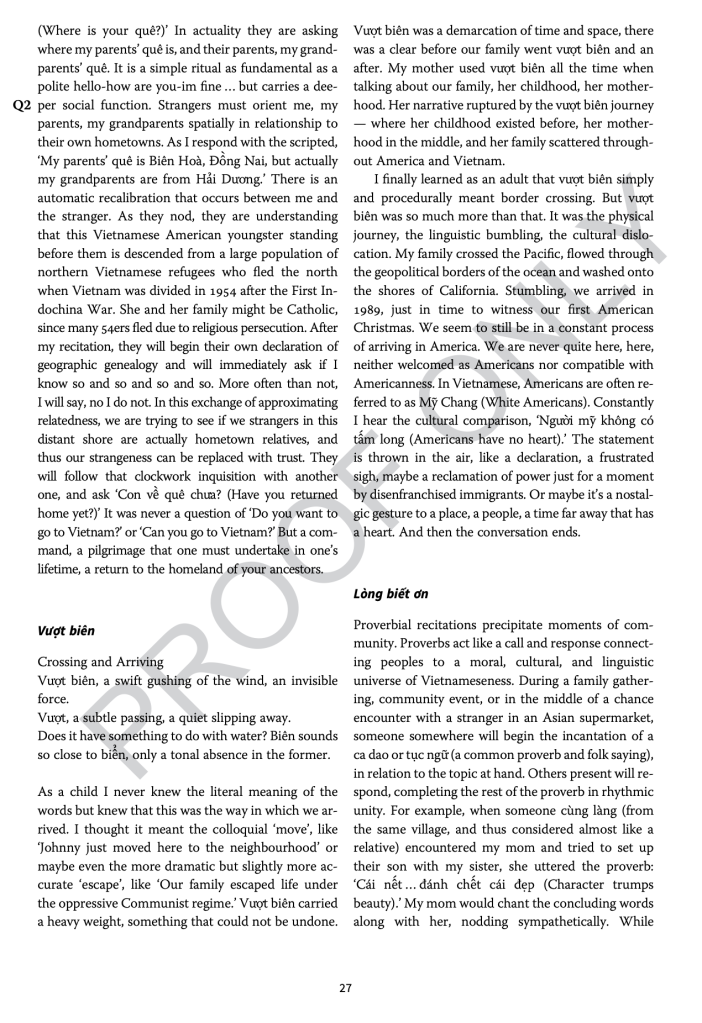
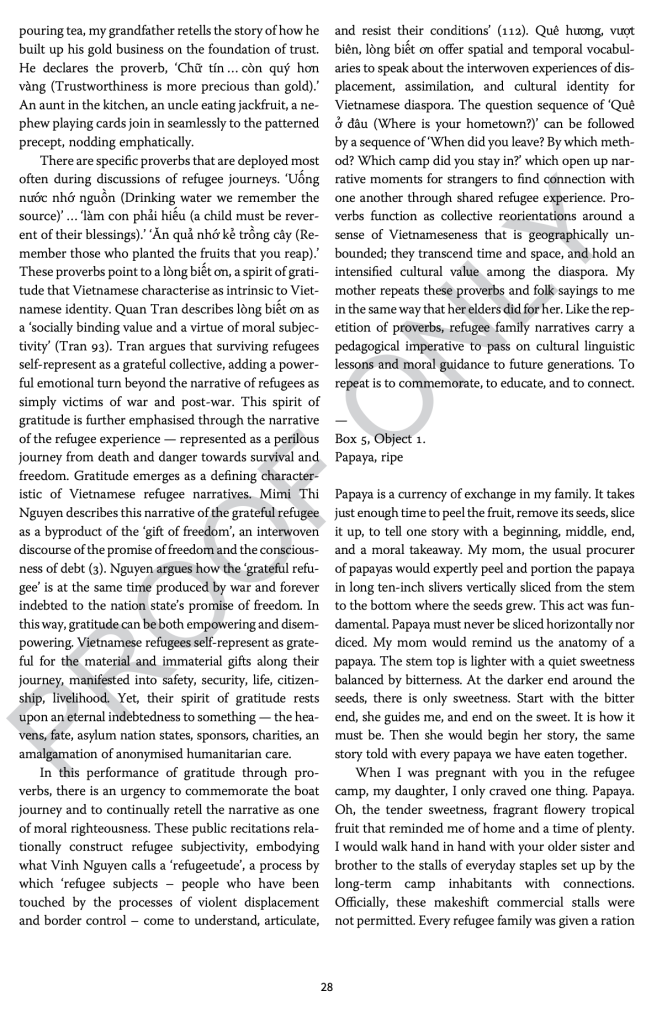

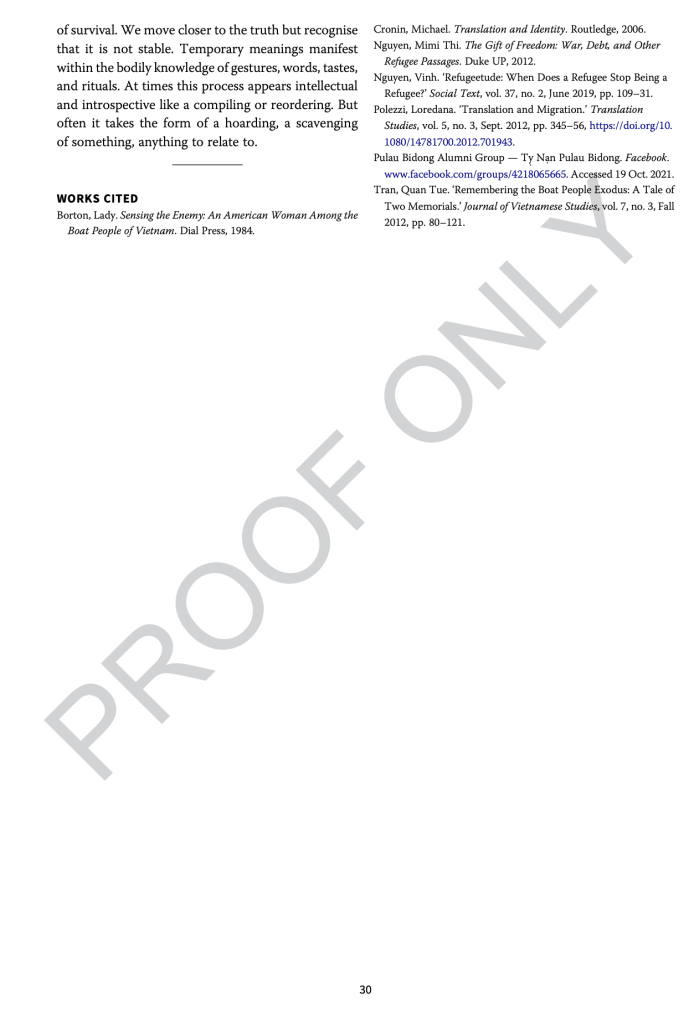
Excerpted from the opening essay by editors Nazry Bahrawi, Joanne Leow, and Y-Dang Troeung:
Etymologically derived from the Latin litus (shore), the word littoral refers to something that is ‘of or belonging to the seashore’. In oceanography and marine biology, ‘the littoral zone’ is the area of closest contact between the land and the water: the intertidal zone, the high-water mark, estuaries, straits, the continental shelf, and more. In the military, the littoral zone is associated with littoral warfare involving combat operations oscillating between water and ground. The littoral also invokes associations with edges, beaches, waterlines, litter, sediment, and drift. The littoral zone offers a rich metaphor for thinking through contact between material spaces such as the land and the sea, and conceptual spaces such as empire and ecology.
Surrounded by oceans, seas, and straits, with its multiple histories of maritime empires and nations, Southeast Asia lends itself particularly well to the study of the littoral zone, as source of livelihood for so many but also as subject of historical and contemporary colonial and postcolonial land reclamation and maritime disputes. From the colonial eras to the post-Cold War moment, Southeast Asian seas, straits, and estuaries have seen the transport of indentured workers, migrants, refugees, trafficked people, deportees, and many other racialised peoples whose bodies and labour have been rendered surplus.
In conversation with communities of artists and scholars in Southeast Asia, we have curated this special issue on Southeast Asia and the littoral. The littoral zones of Southeast Asia are contested spaces and in constant flux: the issue’s focus on postcolonial Southeast Asian texts (from Singapore, Cambodia, Malaysia, Indonesia, Philippines, Vietnam, and Myanmar) aligns with Wasafiri’s long-standing focus on the themes of empire, colonialism, and decoloniality. Thus, a combination of critical, creative, and artistic works is necessary to capture the elusive and mutable nature of these ecologies and landscapes. The selection of contributions – that range from creative writing, traditional scholarship, visual art, poetry, photography, interviews, reviews, and hybrid format works – provide place-based testimonies and glimpses into the complex experiences of existing on the shoreline.
